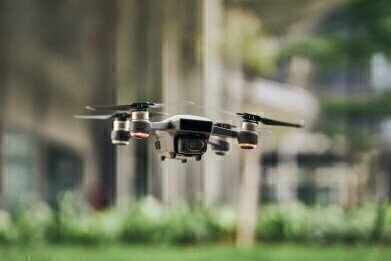Environmental Laboratory
How is Drone Technology Affecting Environmental Monitoring?
Jul 12 2015
Historically used in military operations, drones have now well and truly earned their spot in the mainstream. But it’s not just corporate giants, Facebook, Google and Amazon, who are putting drones to inventive use. Consumers can now pre-order their own drone to track activities and take incredible aerial footage.
Social projects, search and rescue missions and even town planning are now making use of drones to facilitate vital work. But what about environmental monitoring? How is drone technology affecting the environmental sector?
Drones, the environment and agriculture
The agricultural industry has already been advanced by the use of drones for environmental monitoring. The data collated by drones is used to increase arable farming efficiency, and reduce the unnecessary use of pesticides and fertilisers. For example Ursula Agriculture, funded initially by the Welsh Government, now works with agrichemical companies to meaningfully interpret information from drones. This allows them to identify specific weeds and use a GPS tractor for targeted spraying.
Meanwhile major corporations such as Cargill - the world’s largest agricultural company - are using drones to monitor and mitigate their own environmental impact. Cargill is committed to achieving zero deforestation across Indonesian supply chains, and drones are helping to map and monitor sensitive areas. They’re also used to quickly detect illegal forest clearing, and increase palm oil yields.
Wildlife conservation
Drones are also being used by environmental organisations to defy natural barriers and obtain critical information needed to help a range of wildlife. In the Antarctic, activists are using remote-controlled drones to monitor and disrupt Japanese whale hunting. Instead of traversing dangerous seas, the group can launch a drone and spot whaling ships at a range of 190 miles.
The Royal Society for the Protection of Birds (RSPB) has also become a trailblazer in the use of drones for environmental monitoring. Their drone includes thermal imaging; radio tracking and wide-angle cameras to monitor endangered and reintroduced breeds of bird.
The future of drones and the environment
As drone technology advances, prices will inevitably reduce and drones will become more widely available across the whole spectrum of environmental monitoring. The benefits of drones for environmental purposes are clear. They’re quick to deploy, provide unrivalled image quality and are not affected by cloud cover. But - as with all technology - drone success depends on the ability of organisations to not only embrace new developments, but to interpret and act on data in a forward thinking and responsible way.
To find out about an environmentally friendly, biodegradable and non-military answer to drone technology read the following article, Meet the Mr. Nice Guy of Drones. Environmentally Friendly, Biodegradable and Non-Military.
Digital Edition
IET 34.2 March 2024
April 2024
Gas Detection - Biogas batch fermentation system for laboratory use with automatic gas analysis in real time Water/Wastewater - Upcycling sensors for sustainable nature management - Prist...
View all digital editions
Events
Apr 22 2024 Hannover, Germany
Apr 22 2024 Marrakech, Morroco
Apr 23 2024 Kuala Lumpur, Malaysia
Apr 23 2024 Kintex, South Korea
Apr 23 2024 Edmonton, AB, Canada


















